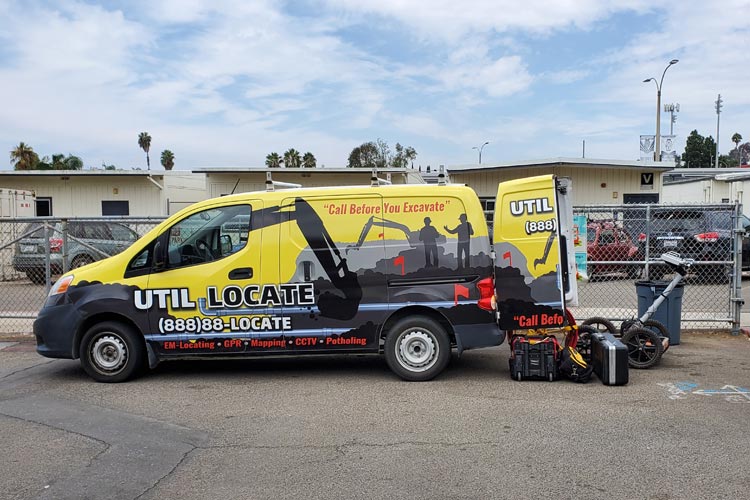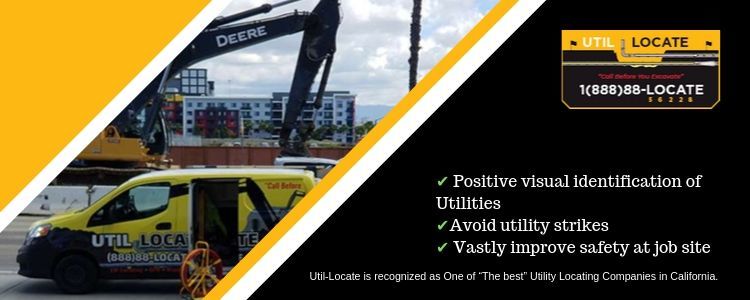When you are at the helm of a construction project, there is a lot of pressure to keep to time constraints and strict budgets. One part of many construction projects that results in unforeseen delays and costs is work dealing with utility lines. Things can go wrong quickly when utilities are not excavated in a safe and efficient way. Utility strikes and excessive surface damage result in delays, repairs, and new budgetary demands that are difficult to keep up with.
That is why utility potholing is the most recommended way to excavate a construction site. There is a reason why vacuum excavation is now the most popular construction method used for locating utilities: not only does it offer reliable visual confirmation of utilities, but it also greatly reduces the risk of a utility strike. Utility potholing is hands down the ONLY truly non-invasive excavation method currently available.
How Other Methods Measure Up
More traditional methods of utility locating include backhoes and manual labor with shovels and trowels. While these methods can work, they come with a lot of downsides that should be borne in mind.
Manual Excavation
Those on a tight budget often turn toward manual excavation due to the extremely cheap upfront costs. However, you will quickly learn just how slow and strenuous this method is, leaving you with exhausted workers and probable delays. Costs quickly add up in these situations and a lot of surface damage is caused in the process.
Backhoes
While a backhoe is much more efficient than excavating by hand, this comes with its own set of risks. For example, a backhoe lacks the precision of vacuum excavation, which means the risk of a utility strike is quite high. When a utility line is struck, it can affect the energy or water supply of the local community and your construction project will be hit with hefty fines to compensate those affected. Repairing utility lines can also be an expensive and time-consuming task that will drain your resources that should be focused elsewhere.
Both of these alternative methods also stir up a lot of earth, which makes them very invasive processes. Even if you manage to avoid damaging utility lines, you will end up spending a lot more time and money replacing the earth that was removed in order to begin working on the construction site again.
Hydro Vacuum Excavation
You can avoid this problem by choosing hydro vacuum excavation instead. This method relies on vacuum excavator equipment which only removes a small patch of earth to reveal the utility lines below. You will find that this results in only the most minimal surface disruption, which can easily and quickly be returned to its original state.
You also will be avoiding utility strikes altogether, which means you won’t have to further excavate for emergency repairs.
Adequate and Thorough Planning
When you choose to use vacuum excavation to locate your utilities, there are additional planning measures you can take to ensure your excavation work is as non-invasive as possible.
Consider using one or more of the following tools or techniques:
- Look at Utility Maps: Util-locate has an extensive collection of utility maps showing the locations of many subsurface level structures including:
-
- utility lines such as power and gas lines
- pipes or underground cables
- other objects that other maps or blueprints might not include.
Using these maps is a great way to decide where to excavate your construction site. You will also be able to estimate how deep your excavation team will need to dig each pothole to attain visual verification of utility locations.
- GPR Technology: Uses Radar technology to provide images of subsurface level structure indications. While this should be used in conjunction with vacuum excavation, it is useful to gather as much data as possible before excavating. GPR is a non-invasive tool that might minimize the amount of excavating required later on.
- Hire an Experienced Team: one of the most important things to do is hire a professional team of vacuum excavators. Not only will they understand how to use the excavation equipment properly and safely, but they will also do everything possible to minimize surface damage. While a professional team will require some upfront costs, it is the best option to ensure that utility lines are accurately located and the surface of your construction site remains undisturbed and undamaged.
When used alongside vacuum excavation, these are the best ways to minimize all types of surface damage so that you can leave behind a small footprint on your construction site. This will keep your construction project moving forward rather than wasting time and money trying to remedy damage to the earth.
Safety on Your Construction Site
We know that safety should be the first priority on any construction site. As with all construction work, excavation can pose certain health and safety risks, especially when sewer and gas lines are involved. The team at Util-locate will always provide the safest utility potholing experience to keep your crew, site, and members of the public safe.
It is also recommended that you provide your crew with regular safety training throughout the length of the construction project, not just before work begins. This will keep the site very safe and ensure that your crew is aware of new risks that might emerge later on.
Our team has years of experience utility potholing, which means all of our equipment is used properly, efficiently, and safely. This ensures that utility lines are found efficiently and in a cost-effective, secure way. We will also make sure that the ground of your construction site is disturbed only where necessary so that you don’t have to worry about unexpected costs or delays.


